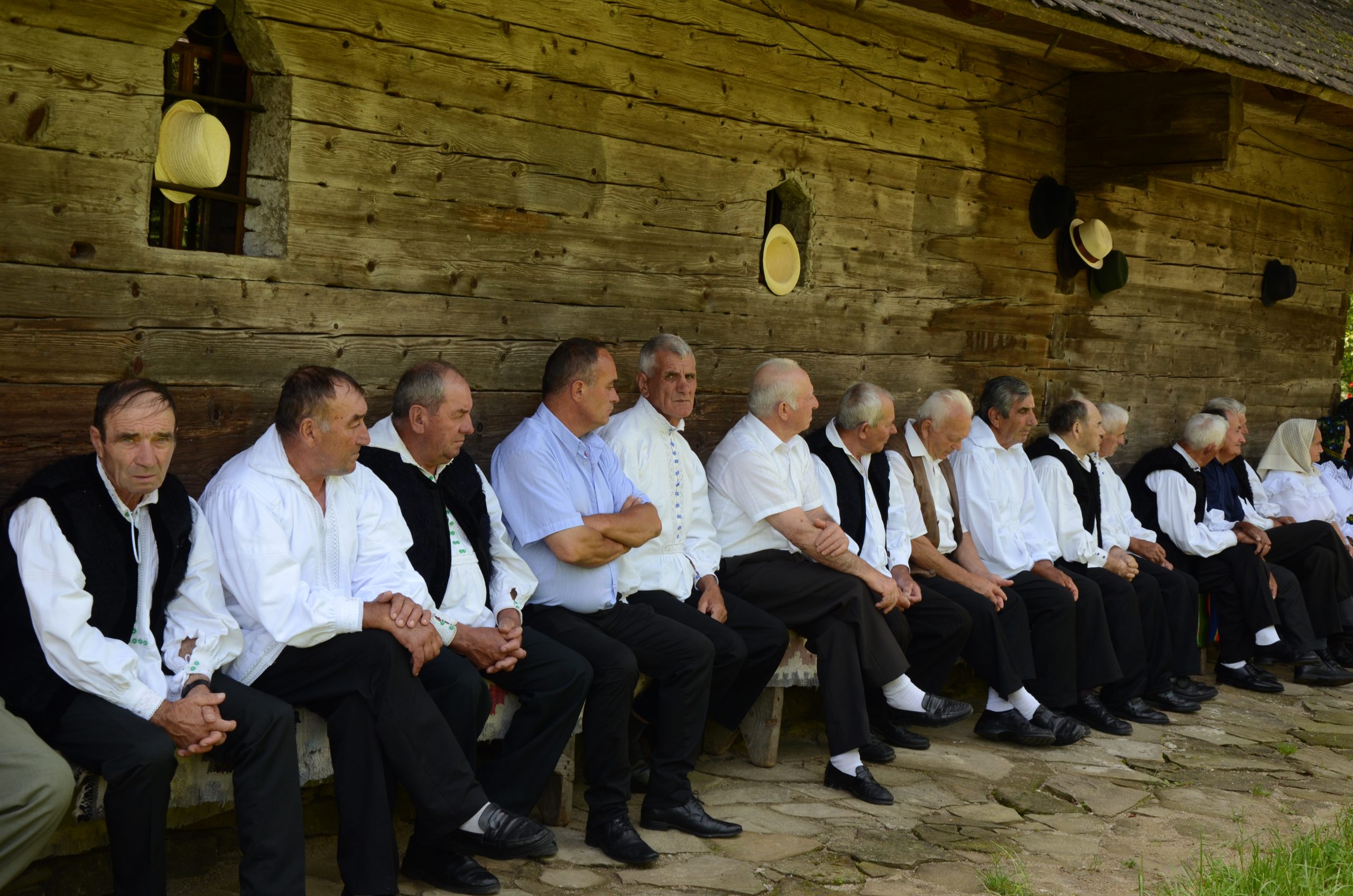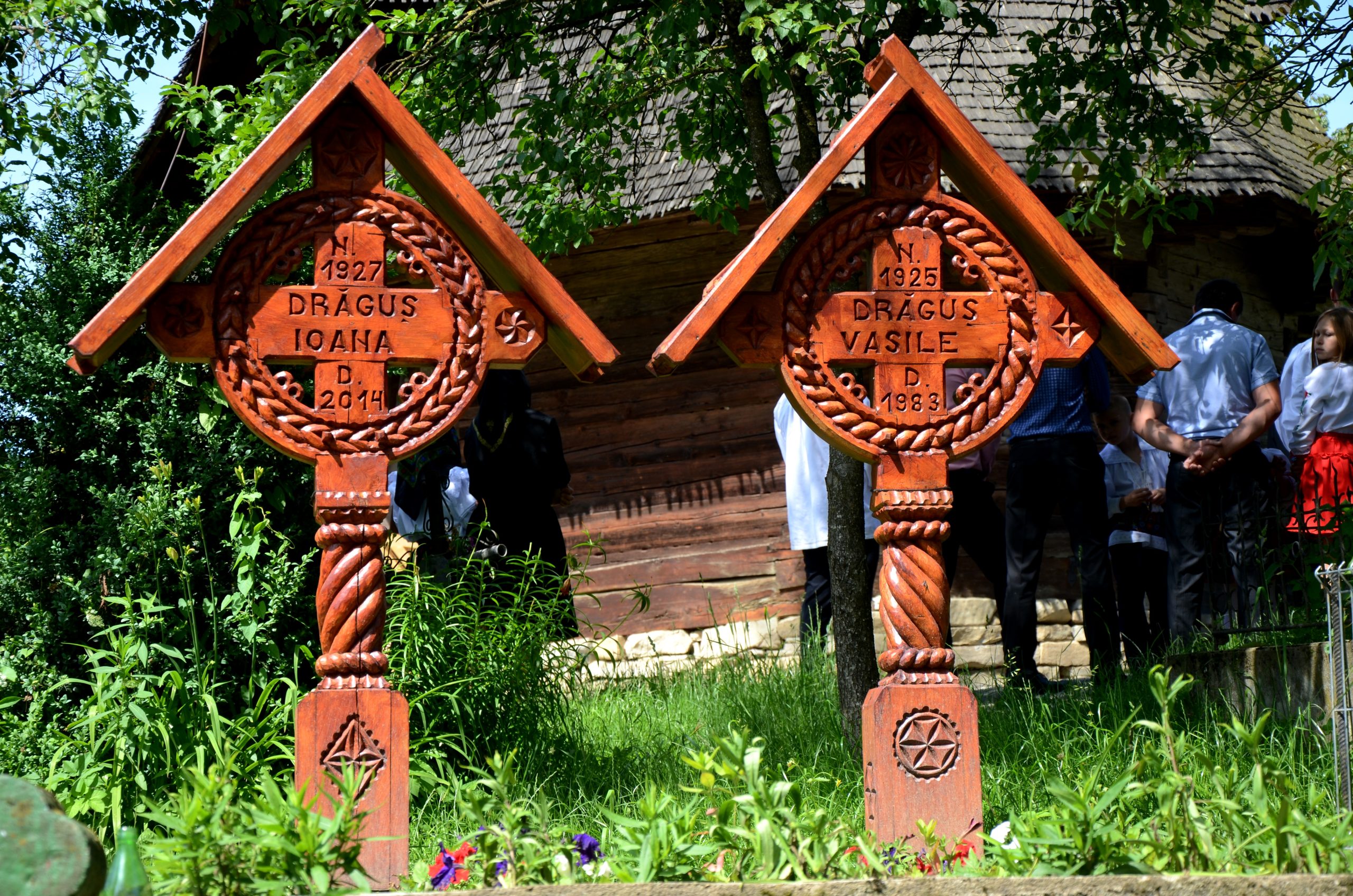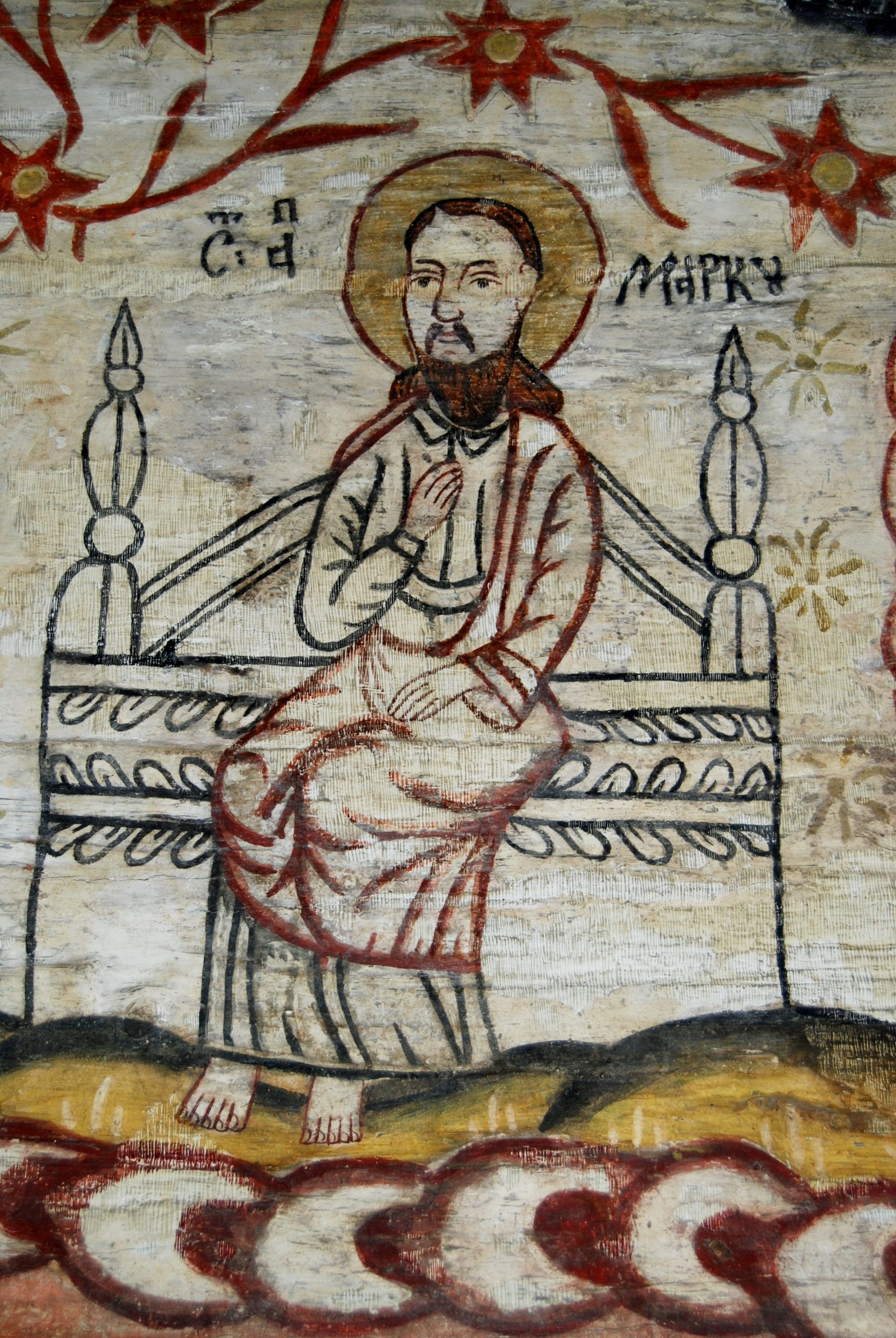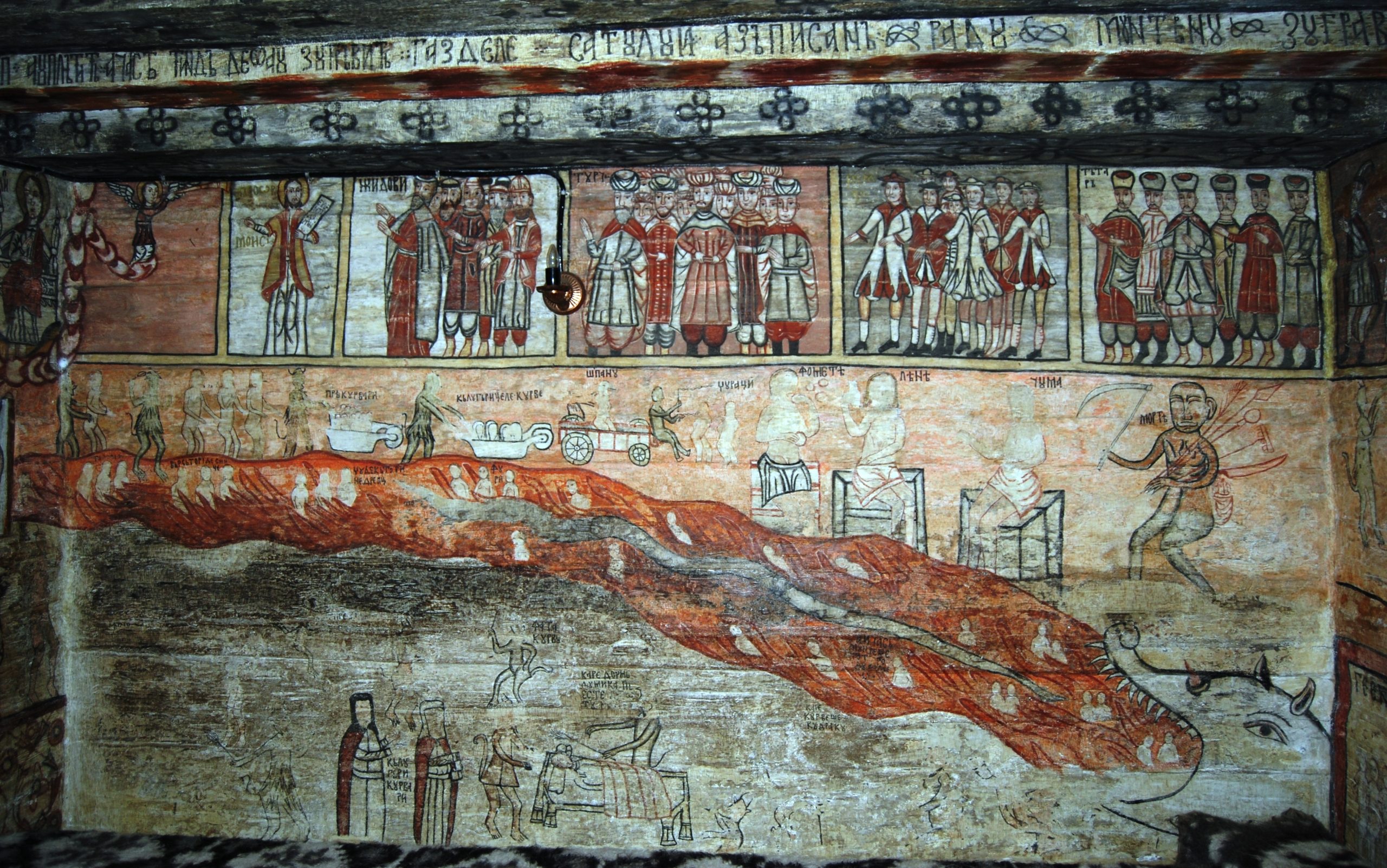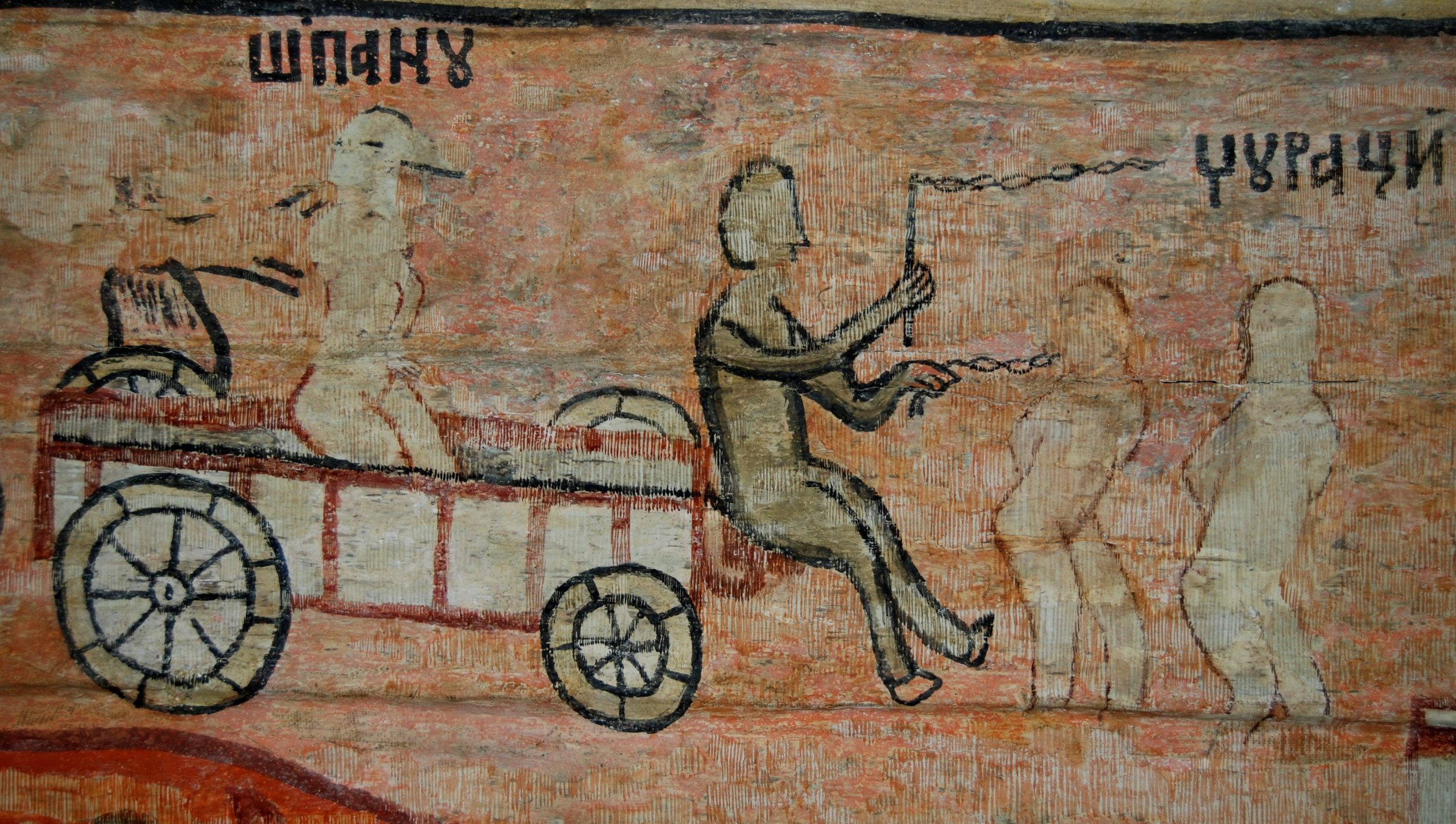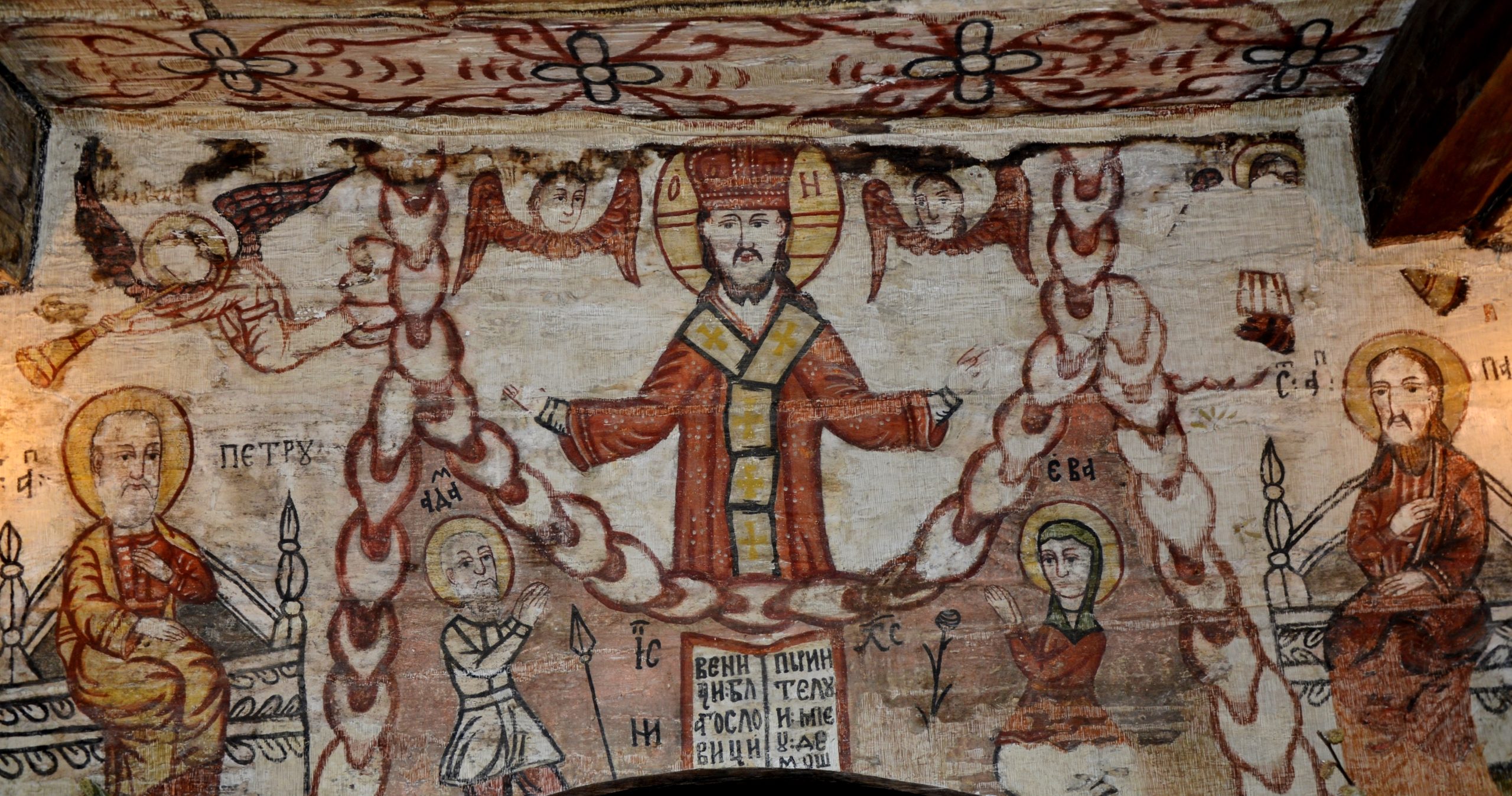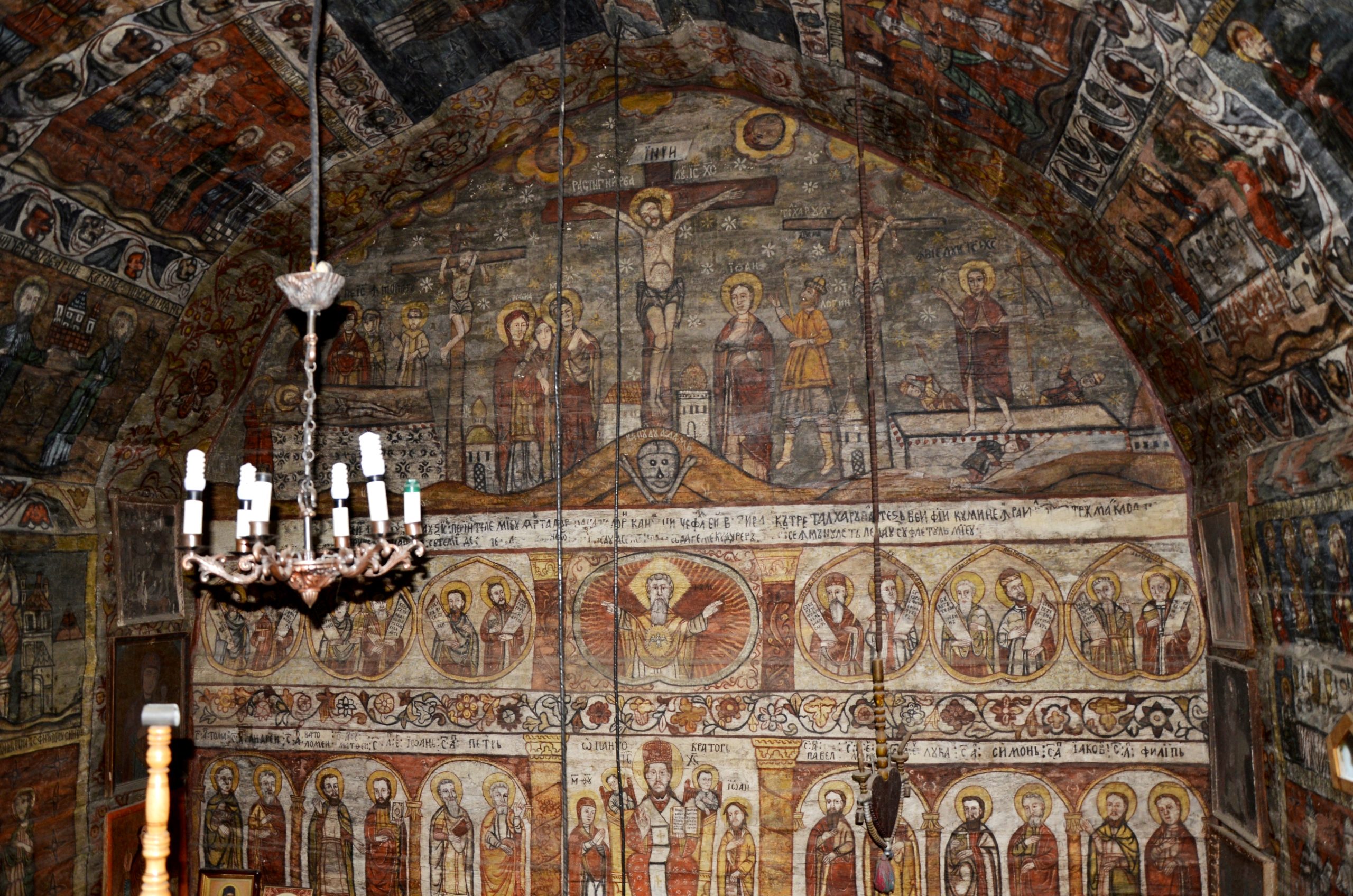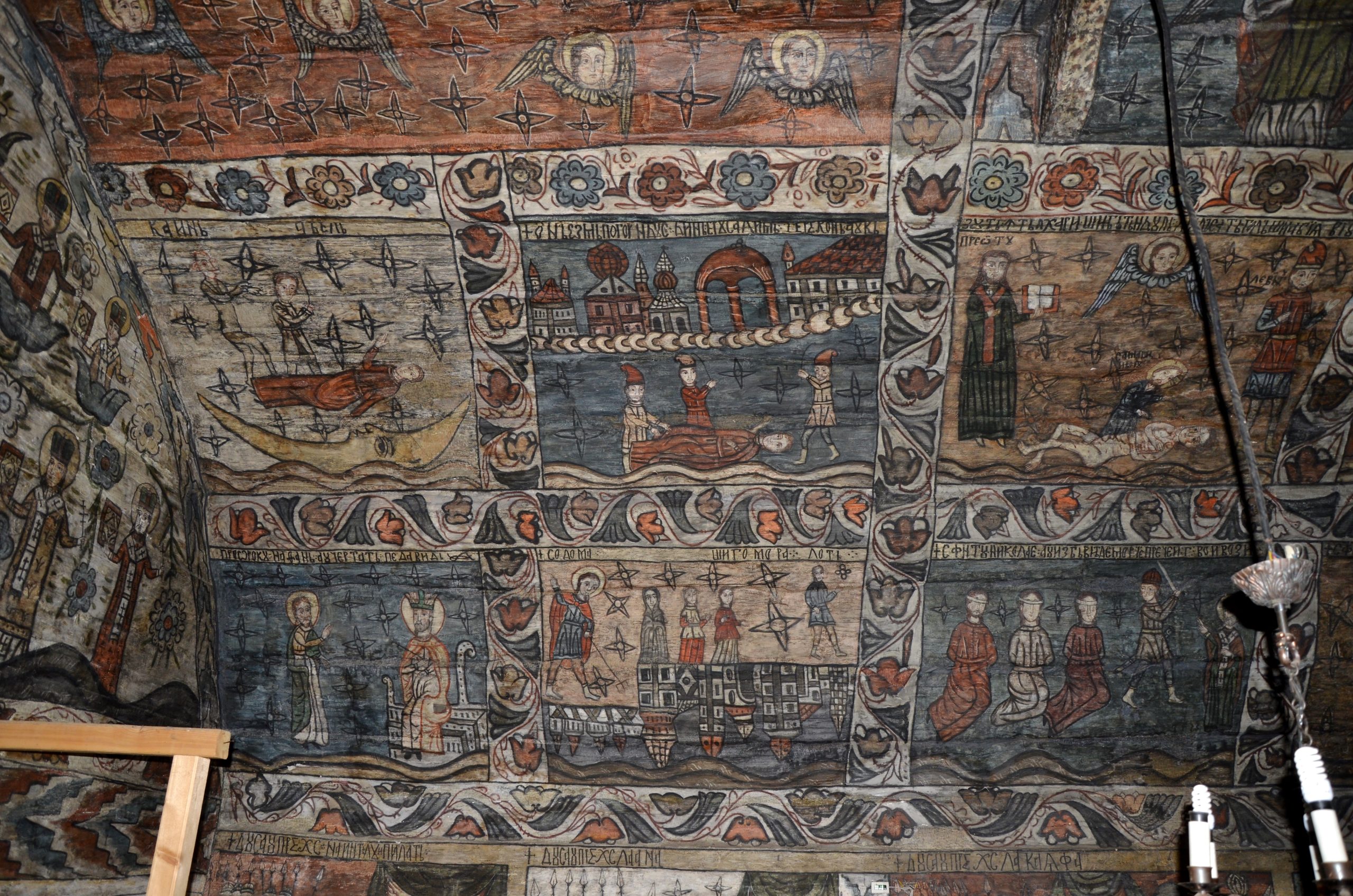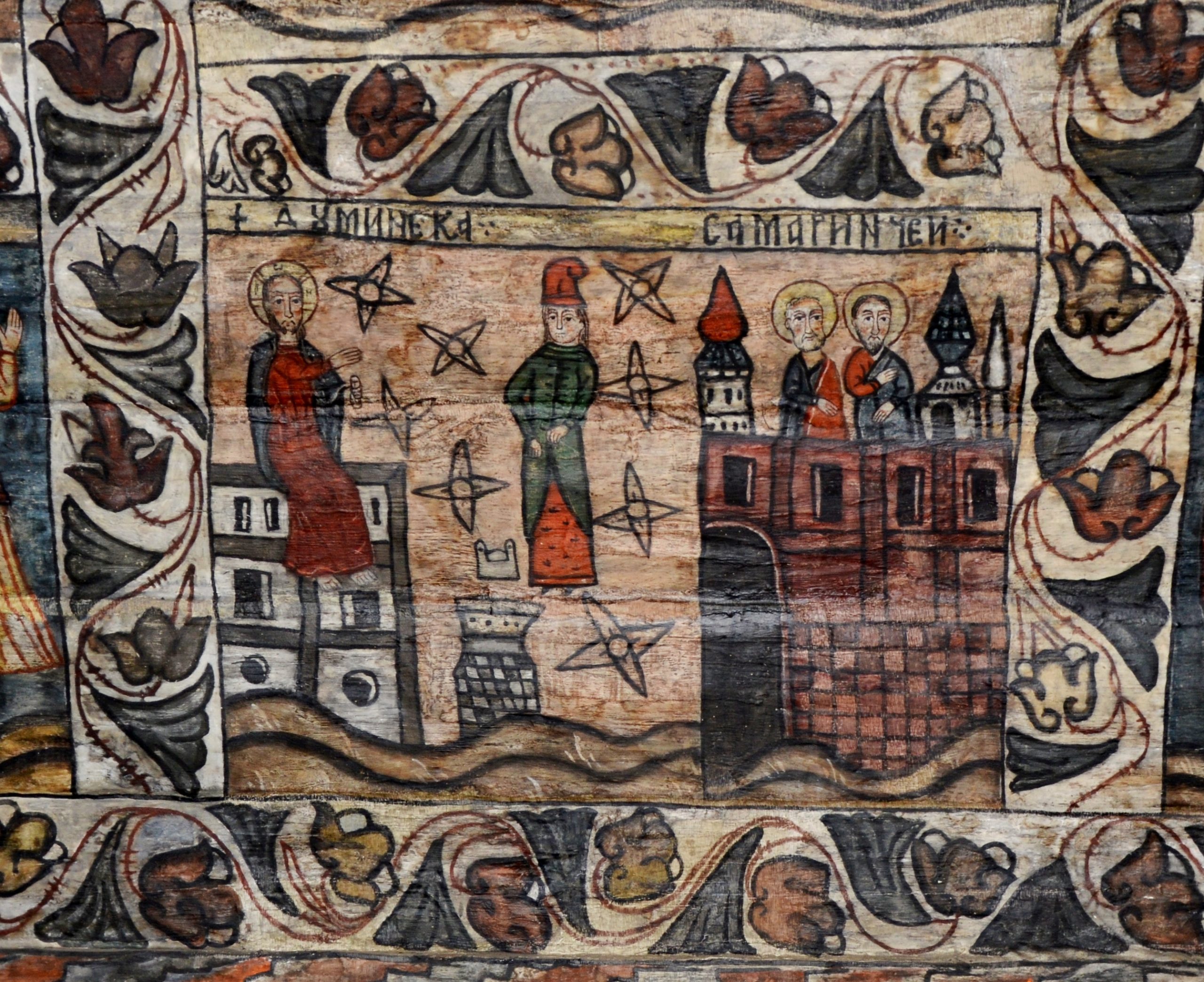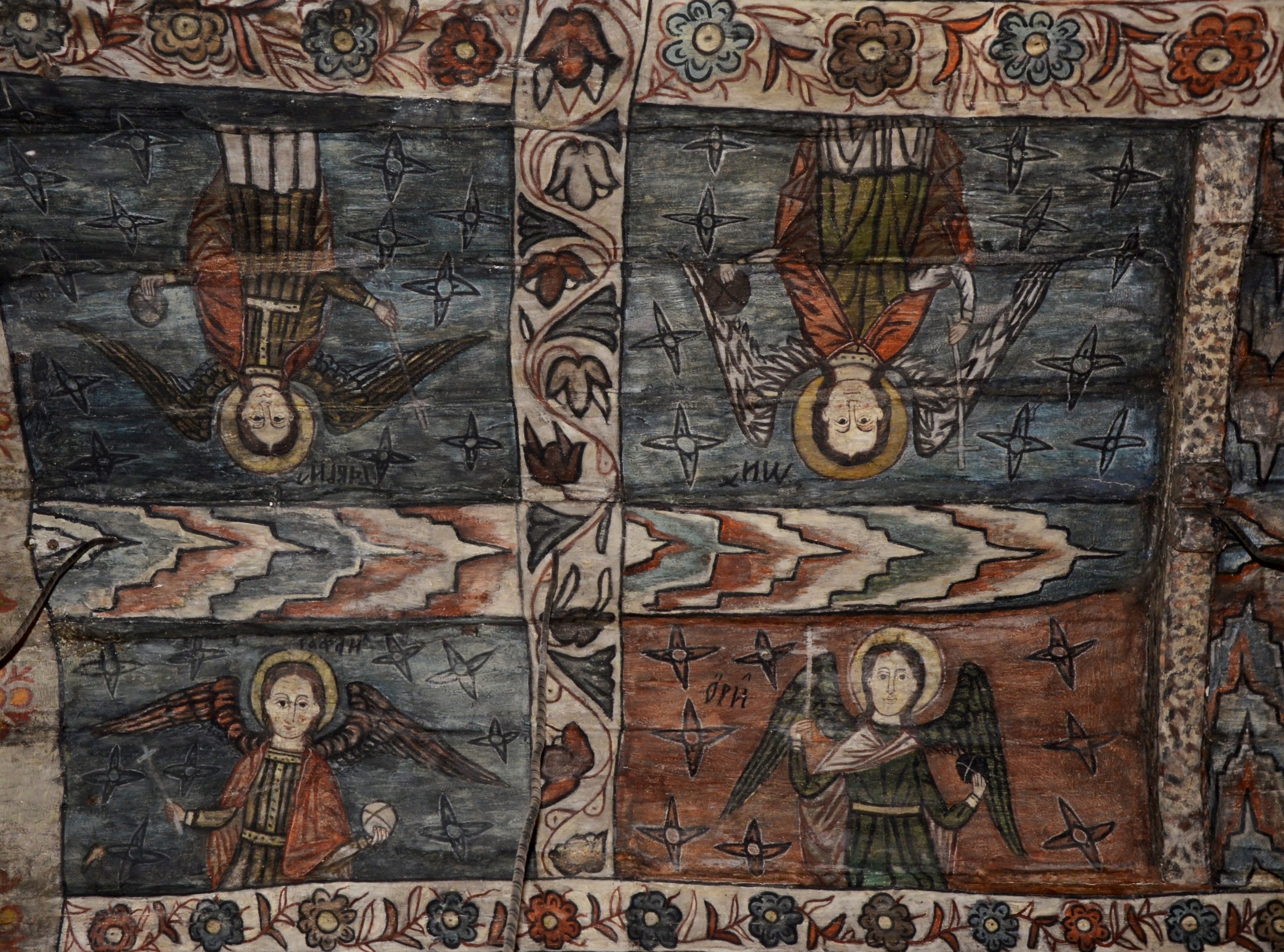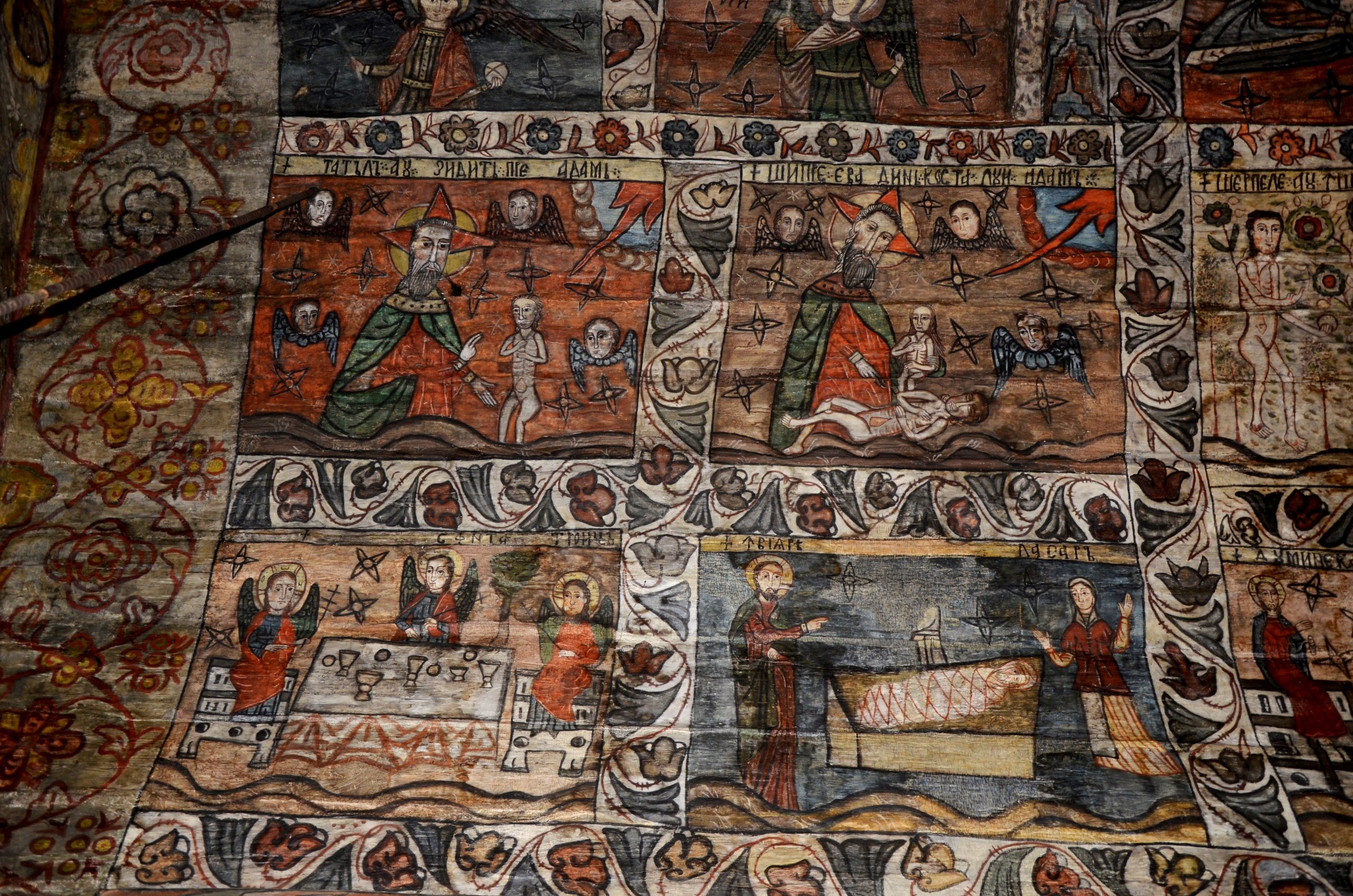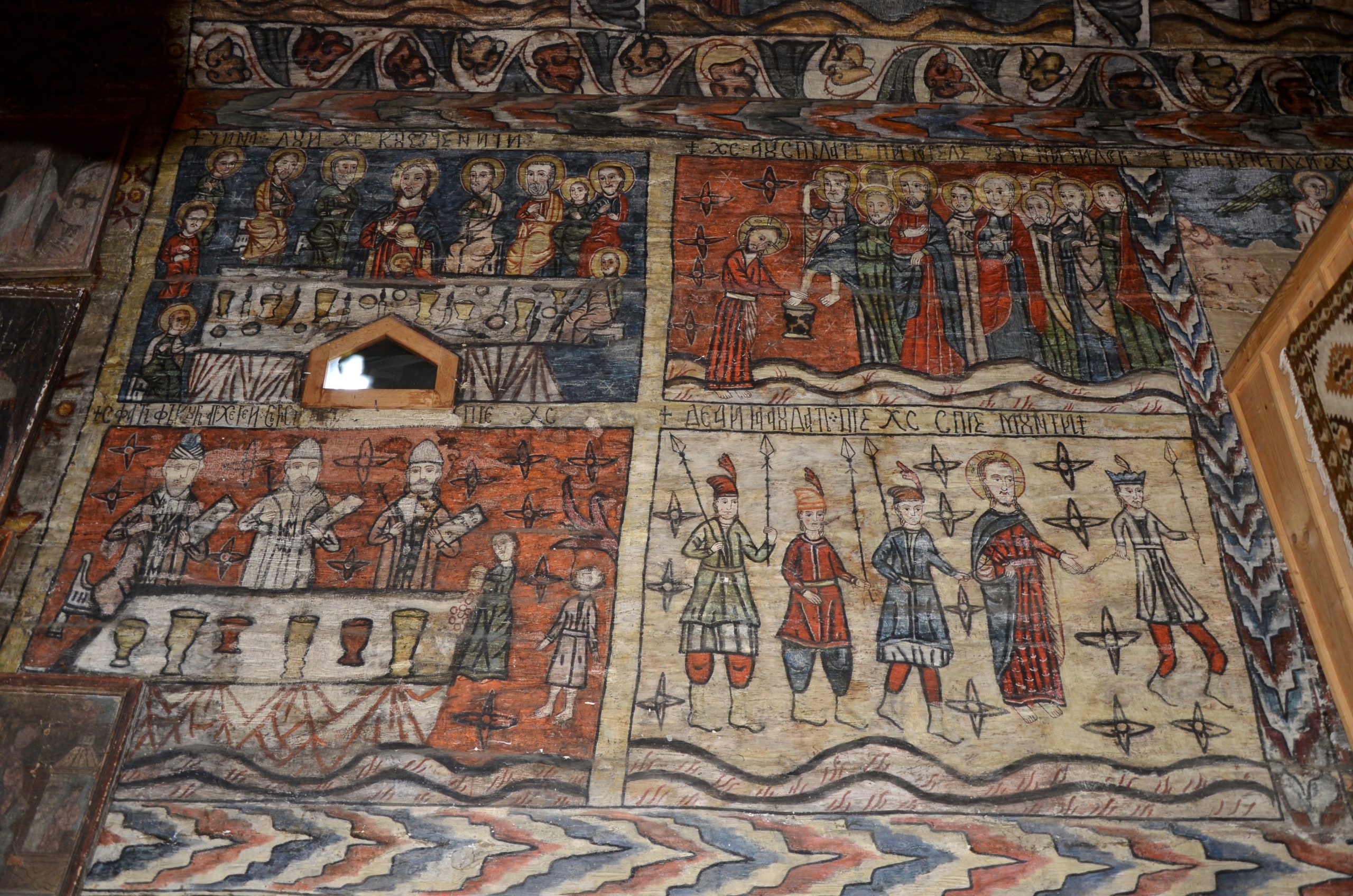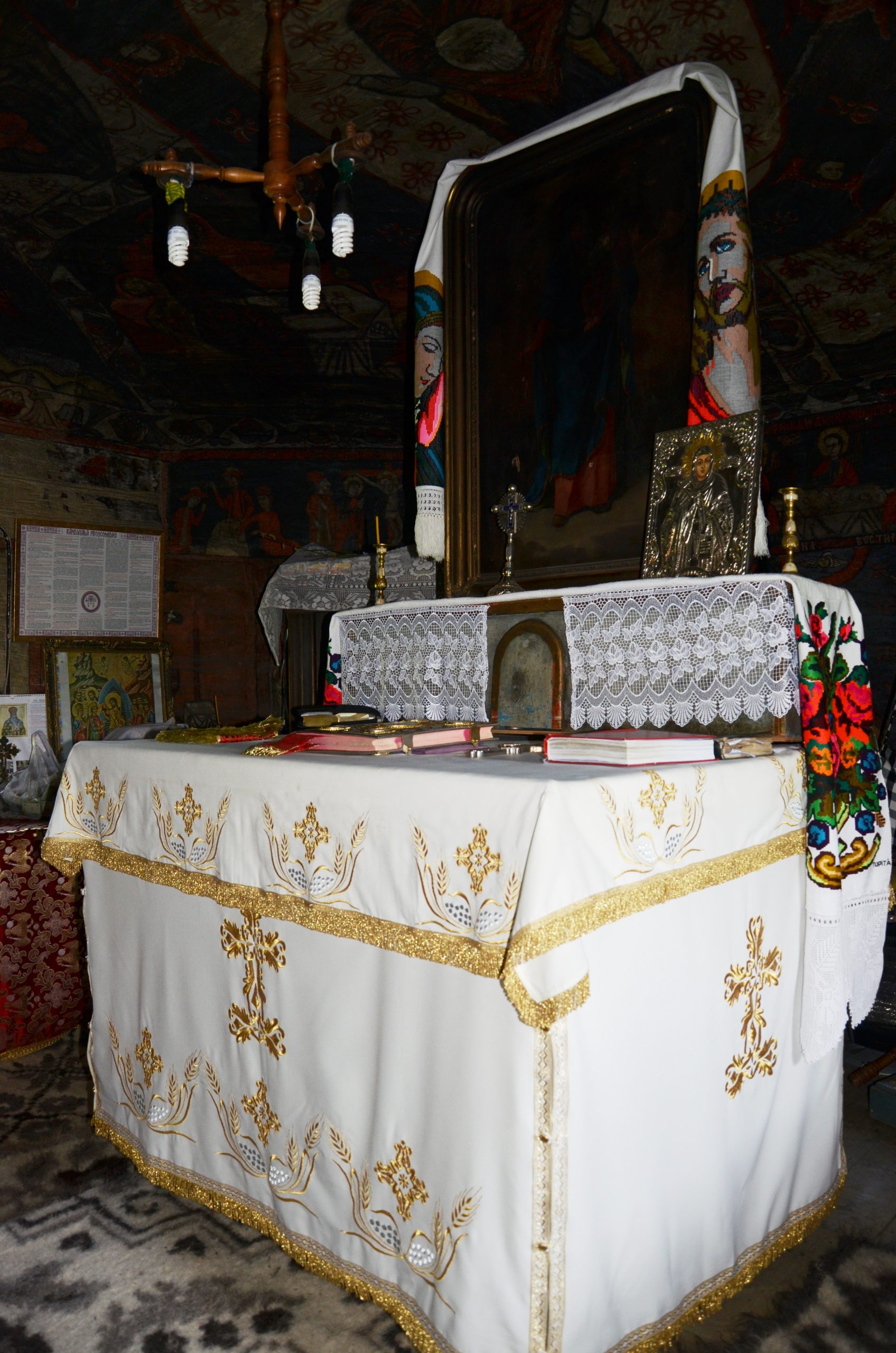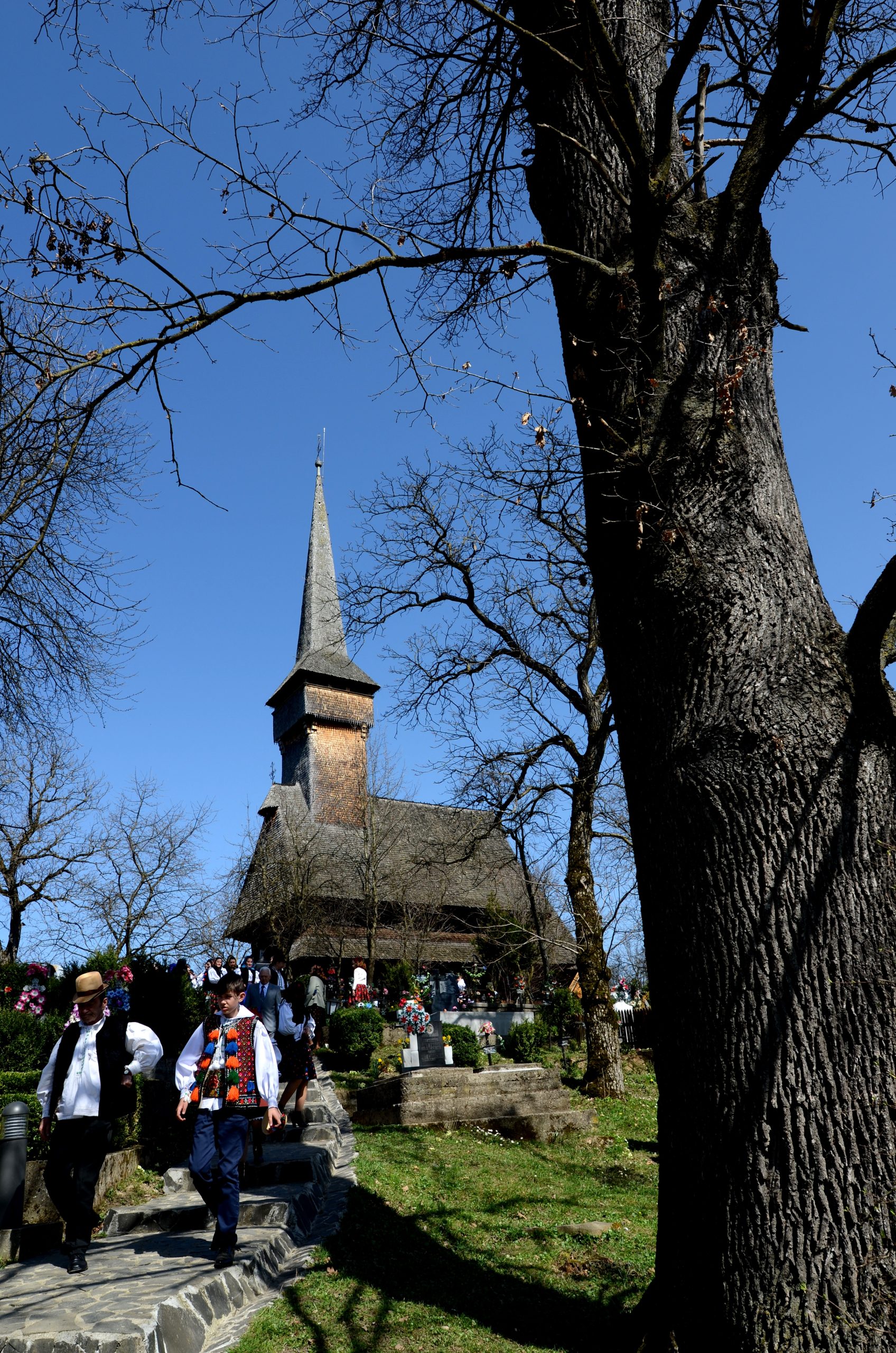"Saint Parascheva" wooden church from Deseşti, UNESCO
Address: 88 Principala Street, Deseşti commune 437135, Maramureş county, Romania
Phone/fax: +40 730 004 715
Most experts date the wooden church of “Holy Pious Paraskeva” from Desesti to 1770, which was inscribed on the UNESCO World Heritage List in 1999. Post-Byzantine paintings from the 18th century, typical of Maramures, still cover the walls of three rooms and are associated with the names of two great artists from the county, Radu Munteanu and Alexandru Ponehalsa.
The wooden church from Deseşti underwent extensive restoration work in 1996-1998, focusing on the general architecture and wall paintings, and in 1999 it was included in the UNESCO World Heritage List.
The church dates back to the mid-XVIII century (1770, by Titus Bud and Joby Patterson; 1780, by Alex Babosh). Initially, it belonged to the Greek Catholic cult, so later the Orthodox took over the place of worship.
According to experts, the church from Desesti was built ten years before the interior painting (parietal and iconostasis) was completed, is perfectly preserved, and is an example of 18th-century Maramurean post-Byzantine wall painting.
The painters of the church (educated by nobles from Maramures) were Radu Munteanu and Gheorghe, together with Alexandru Ponehalschi (originally a Polish artist, whose first work, recorded in 1751, was an icon of the Mother of God with the Child from the Barsana Monastery).
The iconostasis of the church from Deszest consists of three superimposed registers, with four royal (mobile) icons in the lower part. The scenes are: The Crucifixion, Burial and Resurrection were painted on the upper temple. In the second register, God the Father is in the centre, and the prophets appear on the flanks. The scene of Deisis appears in the middle of the third register, with the apostles on either side of him.
The UNESCO World Heritage Site of Desesti Church has fourteen icons painted in tempera on wooden supports. The icon depicting Jesus Pantocrator was painted in the seventeenth century, and the rest date from the same century, XVIII. The Virgin and Child and Jesus were painted in 1752, according to the inscription on the first icon, and were probably part of the iconostasis of the old church.
Alexandru Ponehalschi painted icons depicting Jesus Pantocrator (15 May 1778) and the Virgin and Child in 1778.
It is believed that Radu Munteanu (originally from Ungureni, Lepugului Country) painted four icons here: The Ascension of Jesus, the Baptism of the Lord, the Transfiguration of the Lord, and St Paraskeva. The patron saint of the church is the icon of St Paraskeva (late 18th century).
The dome of the nave symbolises heaven. On the vault of the church were painted the Praying Virgin Mary, Jesus the Teacher, and four archangels – large images from the Old Testament. The Passion cycle includes sixteen scenes attributed to Radu Munteanu, and the faces of martyrs (military saints, hermits, and confessors) on the lower part of the walls attract attention.
In the narthex (a place of access and prayer reserved for women), one can see scenes from the Last Judgement – hell (three walls were allocated to it). The church from Desesti was represented in the paintings “Lenea”, “Death, Plague and Famine”. The upper part of the southern wall is dominated by the image of Moses leading the pagans to the judgement of Jesus. In the narthex, above the entrance, diametrically opposite to Jesus the Judge, the Virgin Mary appears in the form of a prayer.
The wooden church from Desesti belongs to the category of large wooden churches, both in terms of the number of rooms and the system of vaults in the interior. The wood of the church was cut down in the town called Valea Caselor, not far from the church (Al. Baboș, Tracing…, p. 149).
Some documents stored in the DJC Maramureş archive state that it is made of elm wood (Traian Ursu, Brief History, 70s-80s), while others mention only “hard wood” (Monument Card, 1962, Al. Cumpănaşu).
In the latest restoration project, architect Niels Auner describes the church’s building system as follows:
A. Oak soles 20×25 cm.
Б. Closing and partition walls made of carved oak timber supported by a block system, with dovetail joints in the corners and intersections.
C. The vault above the nave is semi-cylindrical, made of spruce beams, supported by edge drumming.
D. The bell tower in the form of a rectangular prism is made of a system of pillars, fixed at the bottom on 2 pairs of crossed scaffolding resting on the walls of the narthex, and at the top on 2 pairs of contour beams, on which it rests on the tower arbour, above which the helmet is fixed, respectively, the rafters of the frame.
F. The frame of the church building is made of carved spruce trusses composed of rafters supported along the perimeter by baskets fastened with pliers (staples), which provide good rigidity of the system. The volume of the church is characterised by the presence of a double ceiling, typical of large churches in the Maramures region.
Dimensions: Ac: built-up area 91.43 m2.
They have: usable area 78.47 m2.
h: External ridge height 10.00 m.
H: Tower height 18.85 m.
The church’s painting, like other churches in Maramures, depicts scenes from the Old and New Testaments in a moralistic parallel. “The overall compositional organisation of the Deseşti painting is achieved by dividing the surface with stripes with floral motifs, round leaves and flowers or from the tulip family, deployed in a meander (… ) Both the scenes and the characters within them are juxtaposed rather than compositional, the effect of unity arising from the decorative rhythm reflected in the whole (…) Figures are most often depicted from the front, with extremely low gestures and stereotypes; a few profile images are actually only arms and legs, with the head and body visible from the front. The characters wear stiff clothing that falls in straight, sketchy, non-anatomical folds, drawn in black and sometimes accentuated with white to create a sense of volume. (…) The most varied and picturesque costumes appear among the sinful peoples of the Last Judgement: Turks and Tatars with shawls, tunics and capes, with various types of islichs, Germans in closed suits with brandenburgs and small boron hats, and finally, the elegant “fringes”, in short tunics and narrow trousers, with very high hats.” (Anca Bratu, The Maramures Fresco, pp. 188-189)


